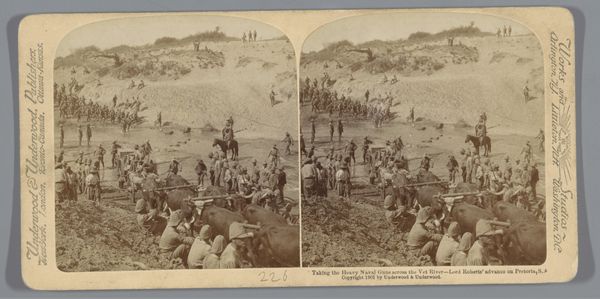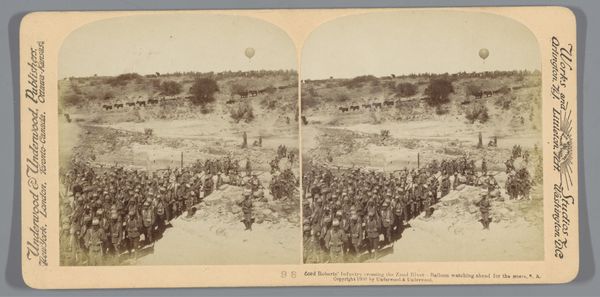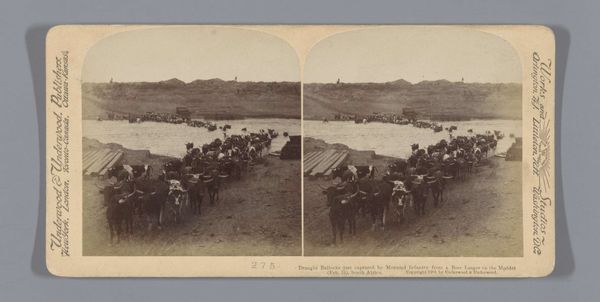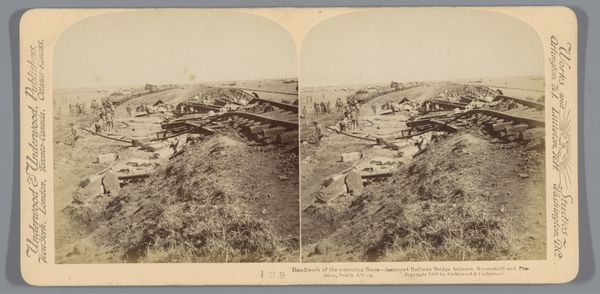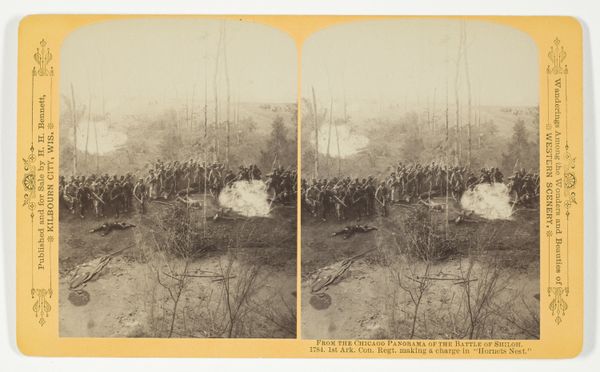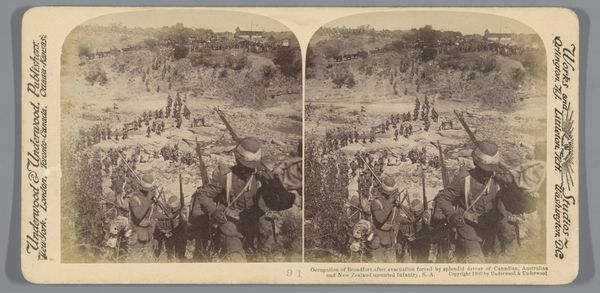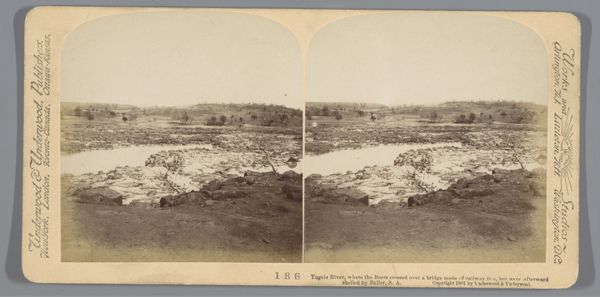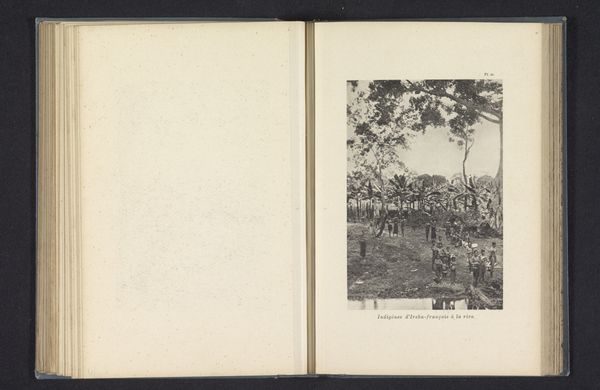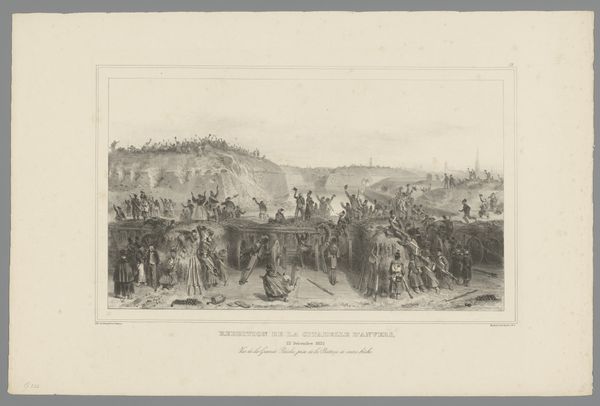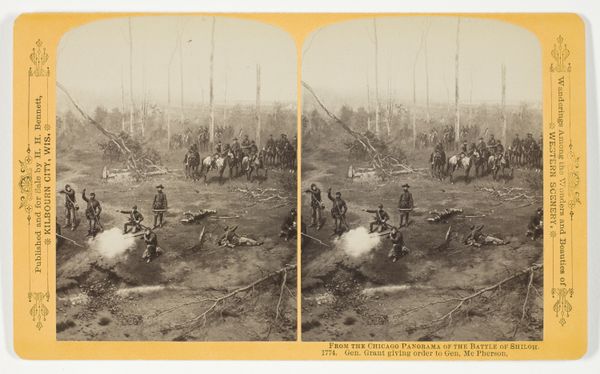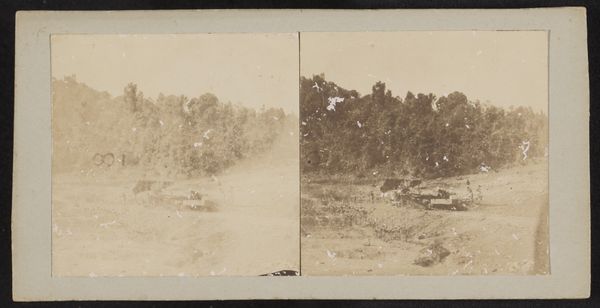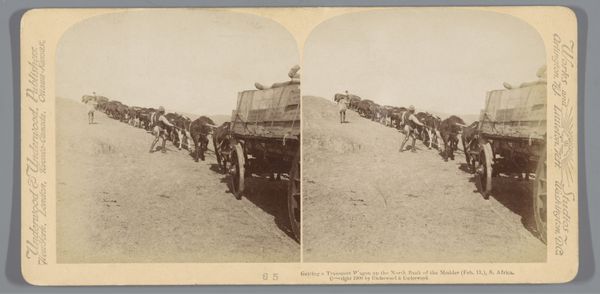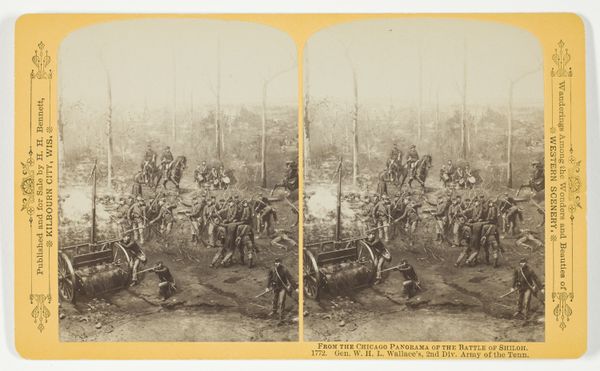
Het voetleger van Lord Roberts (Frederick Sleigh Roberts) steekt de Vetrivier over tijdens de opmars naar Pretoria 1901
0:00
0:00
print, photography, gelatin-silver-print
# print
#
landscape
#
photography
#
gelatin-silver-print
#
history-painting
#
realism
Dimensions: height 88 mm, width 178 mm
Copyright: Rijks Museum: Open Domain
Editor: We’re looking at a photograph from 1901, “Het voetleger van Lord Roberts (Frederick Sleigh Roberts) steekt de Vetrivier over tijdens de opmars naar Pretoria.” It depicts soldiers crossing a river. The sepia tone and the sheer number of figures create a real sense of scale and... I don't know... inevitability. What do you make of it? Curator: Well, this image, a gelatin-silver print, captures a moment from the Second Boer War. Photography like this served a crucial public function. How do you think images like this, showing British forces marching through South Africa, were used back home in England? Editor: I imagine they were meant to project strength, order, imperial dominance. Like a visual propaganda tool. Curator: Precisely. Think about who made these images and why. Underwood & Underwood, a major publishing house, produced countless stereographs. This wasn't just documentation; it was a carefully constructed narrative. Consider the composition. How does the artist’s choice to highlight the regimented lines impact its reception? Editor: The composition definitely reinforces the feeling of control and inevitability, a force moving through the landscape. The contrast between the clean lines of the soldiers and the uneven terrain they cross almost feels symbolic. Curator: Exactly. It reflects the Victorian obsession with order, progress, and their self-appointed “civilizing mission.” Seeing this image, what questions does it raise about the role of photography in shaping public opinion and justifying imperial expansion? Editor: It makes me realize how important it is to look critically at historical images. What seems like a straightforward depiction can be heavily biased. Thanks, this has really reshaped how I think about historical photography! Curator: And it shows how photography, even then, played a crucial role in the politics of imagery and imperial power. A valuable lesson.
Comments
No comments
Be the first to comment and join the conversation on the ultimate creative platform.
